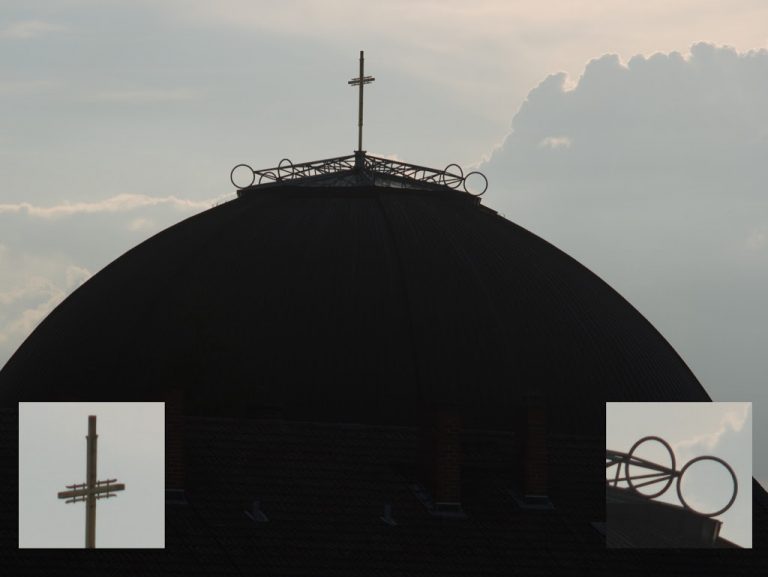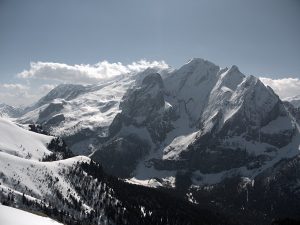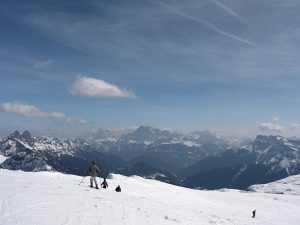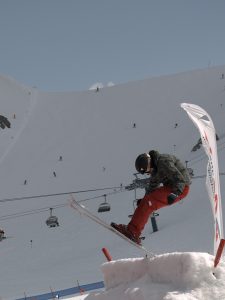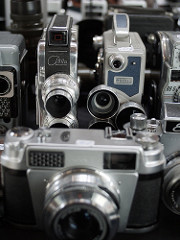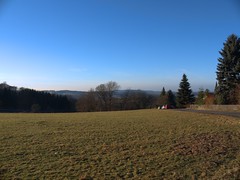A couple of days ago I acquired an old Canon A1 SLR camera. Someone was selling off old photo equipment on Ebay and so with the camera came a small collection of four lenses. One of them is a Tokina 135mm f2.8 telephoto. It's quite an impressive item, looking much sturdier mechanically than its Canon FD counterpart. It's made of all aluminium, even the aperture ring is made of metal. It feels quite heavy in your hand and appears to have been well treated since there is no apparent sign of wear. Since I also own the Canon lens, I started wondering which of the two to sell. Casual shooting with both lenses on the G1 didn't reveal major differences in image quality so I did a series of shots under more challenging conditions.
The following photos show performance of both lenses while taking images of a church in my home town against the bright sky before sunset. The sun is hidden behind a cloud layer just outside to the right of the frame on the G1, on a 35mm film camera it would still be inside the frame.
The photos taken with the Tokina are always on the left side. They start at f8 and go up to f2.8, the maximum aperture for both. The lenses feature a built-in hood, it was used while taking the photos but of course for a factor-two crop sensor it's not deep enough. The images were taken as RAW files and then developed without any sharpening or other corrections applied. They were downscaled for presentation and 100% crops of two interesting areas patched on.
Tokina f8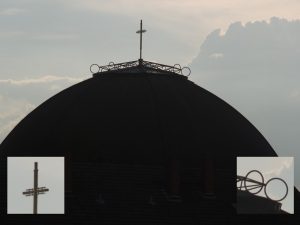 |
Canon f8 |
As you can see, at f8 there is not much difference between both lenses. If you look at the 100% crops, there is a slight advantage for the Canon, but it's not obvious. There is a difference in color tone, but I cannot say if its a difference of the lens or just subtle changes in the lighting conditions.
Tokina f5.6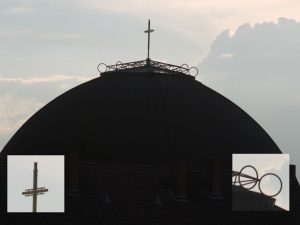 |
Canon f5.6 |
At f5.6 the difference is more noticeable. While the Canon lens shows almost no degradation in sharpness and contrast, the photo taken with the Tokina is becoming a little soft with a very slight amount of CA, but it's still pretty good.
Tokina f4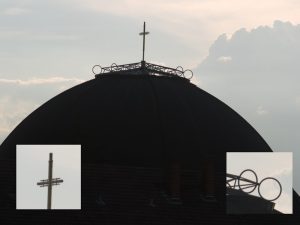 |
Canon f4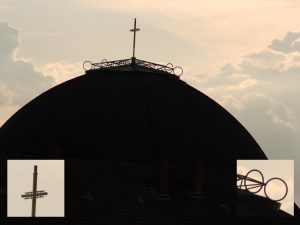 |
The trend continues at f4, the gap between Tokina and Canon is getting wider. The Canon now starts to show a little softness and a bit of CA, but its overall still pretty good.
Tokina f2.8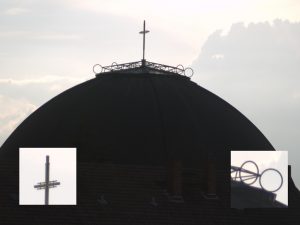 |
Canon f2.8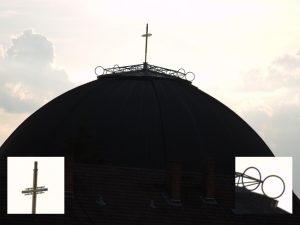 |
At f2.8, the Tokina shows a significant loss of contrast and increased softness. Color seams appear around back-lit areas. The Canon has also lost some of the sharpness and contrast it displays at smaller apertures, but its a lot better than its Tokina counterpart.
Summing up, I found the Tokina lens to be performing quite well under most conditions. A challenging environment like strong light sources just outside of the frame requires stopping down to f4 or f5.6 for good image quality. The Canon 135mm however proves to be an excellent lens with good results even wide open.

